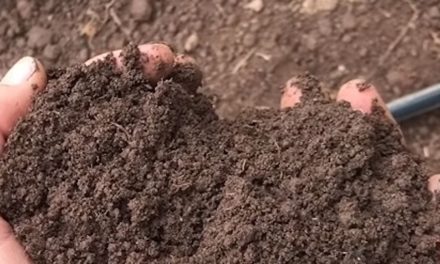 Do you remember our editor Margaret Evans’ New Year’s lament about resolutions a few weeks ago? Dear Margaret ranted about the futility of resolutions and wrote of her dreams of having a beautiful flower garden and the challenges of achieving her dreams while being a busy working mother. That’s a lament a lot of us can associate with.
Do you remember our editor Margaret Evans’ New Year’s lament about resolutions a few weeks ago? Dear Margaret ranted about the futility of resolutions and wrote of her dreams of having a beautiful flower garden and the challenges of achieving her dreams while being a busy working mother. That’s a lament a lot of us can associate with.
While vegetable gardening can put food on the table, flower gardening, sadly, is a discretionary activity which normally comes long after working and parenting.
Maybe we need to re-picture what makes a beautiful garden. Margaret dreamed of wisteria spilling out of window boxes. Well, while the wisteria part is unlikely (although it does sound lovely), a window box is something that will make a huge difference in the right location, and it does not have to be difficult at all. It is something that can be done in an afternoon.
I find it best to sink plants, still in their pots, into a large container such as a window box. Using pots of a similar size works best for this method. The spaces between the pots can be filled in with a lightweight material such as vermiculite or an inexpensive potting mix. This material also serves to insulate the plants from our summer heat. If one plant fails to thrive it is easy to simply remove it and replace it with another in the same hole. Plants can be changed out seasonally this way also. When the spring bulbs are past their prime, simply stick in some pots of summer annuals. Just be sure to read the labels, and if your box is in a shady location look for plants that specify shade. If you have a location that gets nothing but scalding hot sun all day, you might want to consider using some succulents that are better suited to deal with the heat. Some easy-to-grow plants that can be used as fillers would include asparagus fern; it grows like a weed here and tolerates almost any situation. The trailing sweet potato vines also look good in window boxes and they come in many colors and shapes these days. Just stick them in and your container will look full instantly.
Maintenance is pretty easy also. Add some timed release fertilizer according to the directions on the bottle. After that ,you are ready to figure out how you will keep the box watered. It will only take a few minutes a day if you plan to do this yourself. Nevertheless, it is so easy to forget or put off doing simple chores when you are busy. Watering is probably the biggest obstacle to keeping container plants healthy; we all tend to over or under water them and this is a death sentence for them. However, there are drip irrigation kits on the market that make those chores effortless. I use one by a company called Mr. Landscaper for the many pots on my front porch. I set it up in spring and don’t turn it off before frost. I never have to water these plants. The directions on this kit, designed for the homeowner, are simple and intuitive. I have a little emitter in each pot which can be adjusted for the amount of water each plant needs. (Some pots are larger than others and some plants need more or less water than others). I set it up to turn on for 2 minutes a day, adjust the emitters and then I forget about it. The plants are never over or under watered. Every now and then, I stop to groom the plants, and perhaps add more timed release fertilizer if things are starting to look pale, and that is it. If you wanted to use something like this in a window box, you would just run the line to and along the length of the box. It is a thin, 1/4” line that can be painted to match your house if it is too obvious.
You can do this, Margaret; I’ll even help you pick the plants.








